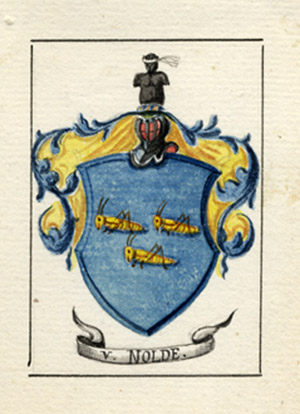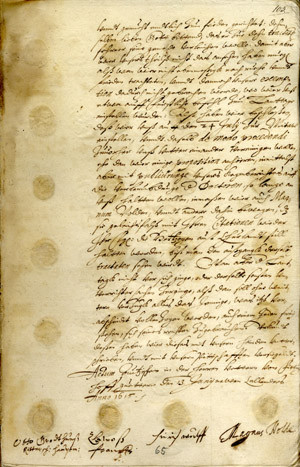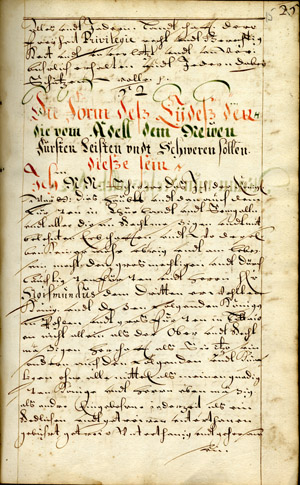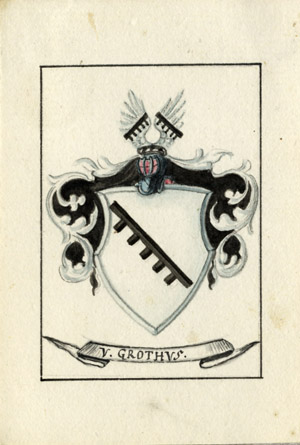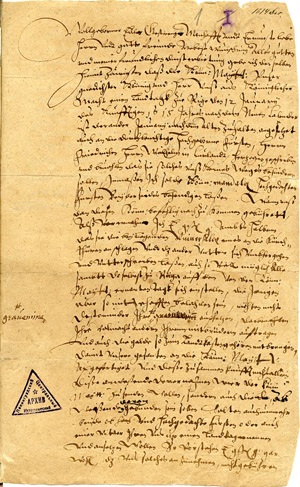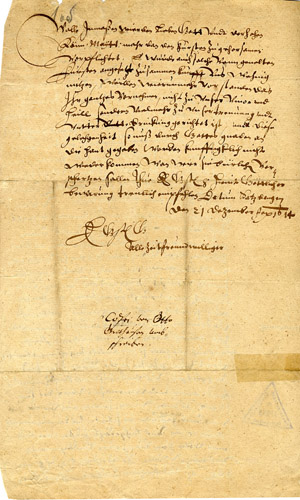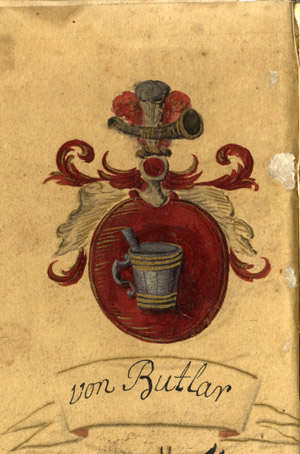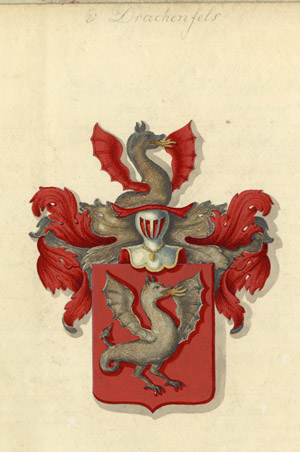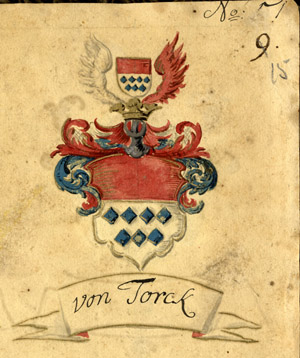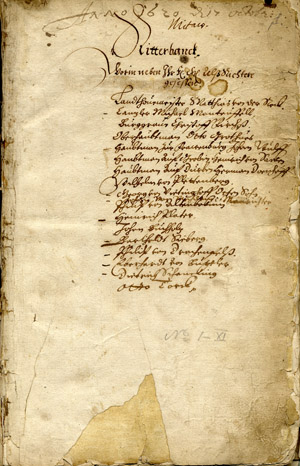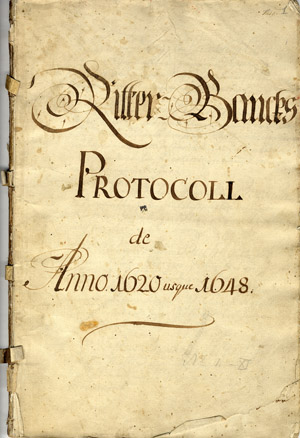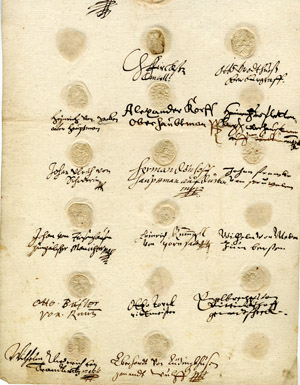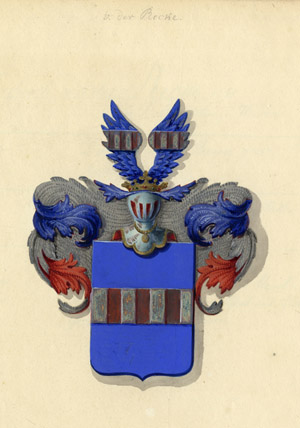The Knights
The Knights were a privileged section of the nobility, established in the Middle Ages as a stratum of vassals of the Livonian Order and the bishops. Originally the knights had the task of personally joining the army of their feudal overlord, but later they gained the right to send an armed horseman in their stead. In the course of the 15th and 16th century the vassal knight evolved from a landowner in his overlord’s service to the owner of a privileged knightly estate. The term ‘knights’ became synonymous with the term ‘nobility’. The knights had their own representative, called the captain (Hauptmann) of the knights, as well as their own money chest or treasury. After the establishment of the Duchy of Courland, the knights of this area considered the duke only ‘first among equals’ and so bitterly opposed any increase in the power of the duke. In order to eliminate competition for manors and official posts, the nobility established a closed organisation or corporation of knights. The constitution of Courland (Formula Regiminis), passed in 1617, gave the knights the right to decide who should be recognised as one of them. From this time, the term ‘knights’ was reserved for those nobles who had been officially enrolled.
1. The Nolde family arms. LVVA, Collection 5759, Inventory, File 1404.
2. Decision of the Diet of Nobles. Vietinghoff Manor, Autz/Auce District, 13 June 1615. Excerpt. LVVA, Collection 640, Inventory 4, File 241.
At the Sejm in Warsaw, representatives of Dukes William and Frederick had declared the knights of the duchy shameless rebels and had criminally indicted 24 individuals. However, the envoys of the nobles convinced the King of Poland to take the accused into his protection. The diet decided to continue legal action against the dukes at the next Sejm, but to refrain from any actions until 24 July, when a diet called by the dukes was to be held in Mitau/Jelgava. This decision by the diet was also signed by Magnus Nolde, arch-enemy of Duke William. His signature appears at the right hand side of the document.
3. Oath of submission by the nobles. Excerpt from the 1617 “Formula Regiminis”. LVVA, Collection 640, Inventory 3, File 627.
The constitution of the duchy or “Formula of Rule”, passed in 1617, retained the old regulation that when the duke acceded to the throne, the nobles must swear an oath of submission to him, but now the form of the oath was unified: each noble promised to be a loyal and obedient subject of the King of Poland and the duke, making all efforts to avert any misfortune threatening “the lands and residents of His Eminence”.
4. Von Grothuss family arms. LVVA, Collection 5759, Inventory 2, File 1404.
5. Circular by Otto von Grothuss, Capitain of the Knights. Katzdangen/ Kazdanga, 21 December 1614. Copy. LVVA, Collection 554, Inventory 1, File 55.
An announcement that the King of Poland has permitted the Diet of the Duchy of Courland to convene in Riga in January and has ordered the dukes not to place any obstacles in the way of this. Copies of the announcement were to be sent throughout the duchy and displayed on church doors. Should the dukes themselves call a diet, the nobles had every right to ignore it, since it would bring no good.
6. Von Buttlar family arms. LVVA, Collection 5759, Inventory 2, File 1402.
7. Von Drachenfels family arms. LVVA, Collection 640, Inventory 3, File 91.
8. Von Torck family arms. LVVA, Collection 5759, Inventory 2, File 1402.
9. List of judges of the first sitting of the Bench of Knights. Mitau/Jelgava, 17 October 1620. LVVA, Collection 640, Inventory 4, File 229.
Compilation of the list of noble landowners belonging to the Courland Register or Bench of Knights began in 1620. The duke appointed as the first judges Landsteward of the Duchy (Landhofmeister) Matthias von der Recke, Chancellor Michael Manteuffel, Burggraf Christoph Fircks and 15 others, whose noble origins were not in doubt. A Court of Knights reviewed the submitted proofs of nobility and decided on the inclusion of the family in a special roll or register of knights.
10. Records of the Bench of Knights. 1620s40s. Excerpt. LVVA, Collection 640, Inventory 4, File 228.
The Court of Knights functioned in the years 16201634, after which inclusion in the register was decided by the diet of the duchy. In 1634 the register of knights included 110 families, and approximately the same number were refused recognition. Most of those not accepted were supporters of Duke William and members of the lower nobility. Only those included in the register were recognised as being of noble birth and enjoyed the right to own “manors of the knights”, hold administrative offices in the duchy and participate in the diet.
11. Signatures of the judges of the last Bench of Knights. Jelgava, 21 July 1634. LVVA, Collection 640, Inventory 4, File 229.
12. Von der Recke family arms. LVVA, Collection 640, Inventory 3, File 133.
